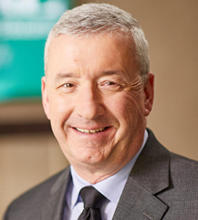Blogrige
The Official Baldrige Blog
Success Strategies of the Baldrige Award-Winning Center for Organ Recovery & Education


The Baldrige Program’s 33rd Quest for Excellence® Conference brings together the leaders of U.S. organizations to celebrate and learn role-model best practices from current and former Baldrige Award recipients.
Attendees take home practical lessons in critical areas such as leadership, strategy, customer and employee engagement, and operations. The speakers also provide attendees with proven solutions to help their organization achieve breakthrough performance and results.
At the upcoming 33rd Quest for Excellence Conference—where award recipients from the past three years will be honored—Kurt Shutterly, chief operating officer of the Center for Organ Recovery & Education (CORE), will be a presenter.
Following is my recent interview with him. As CORE is a 2019 Baldrige Award recipient, Shutterly reflected on how the Baldrige Excellence Framework has advanced CORE’s journey to excellence and suggested how other organizations might also leverage the framework to improve their performance.
Please briefly describe your planned presentation, “Building a Key Performance Management System That Drives Results.”
The CORE Business System describes the three work systems that house our key and support processes needed for execution of the mission and their application throughout the organization. It defines the sequence and interaction of all three systems and provides the basis for performance management.
Performance management occurs through the synchronization of the CORE leadership system that sets direction for our organization, partners, collaborators, suppliers, customers, and other stakeholders. It ensures alignment to our mission, vision, and values; then cascades throughout CORE to dashboards that provide line of sight. This ensures alignment of our performance to planned goals through indicators that are accessible and live, enabling rapid response to internal or external needs. Learning occurs by identifying opportunities for improvement and enables the leveraging of strengths, and it leads to improvement and innovation.
Would you please share a story or example from your organization’s or your personal learning in regard to using the Baldrige Excellence Framework?
CORE has been on our Baldrige journey since 2012. We won the regional Mid Atlantic Alliance for Performance Excellence’s Excellence Award in 2017. We seemed to be on a great path. In 2018, we were in the midst of submitting our first national [Baldrige Award] application. We had over 300 measures of performance with numerous comparisons, and our leadership team was attending Quest conferences annually and “shamelessly borrowing” best practices from recent national award winners.
But something was wrong. Our mission is to save and heal lives through donation. We measure this primarily by the number of organs transplanted that save and heal lives. But performance for this metric was falling short. Was the Baldrige journey worth the effort? How was this helping CORE to save and heal more lives?
It was at this time that we had our “ah-ha” moment. We began to look at our key processes in terms of our critical path. We asked ourselves, Which processes must happen and yet have the most constraints on success? Critical path became the focus of strategic planning and strategic action plans. It also became the focus of daily, monthly, and quarterly metrics and analytics. We then collected only the vital data for key comparisons, as we realized that having more data wasn’t necessarily better. This generated new, innovative methods for organ donor authorization designation, increasing our hospital referrals and reducing process breakdowns. [Organ donor authorization designation refers to how a donor's permission is obtained for CORE to procure organs or tissues for transplantation; for example, self-designation or through a deceased donor's next of kin.] Critical path allowed us to focus on non-designated organ authorization approaches. Implementation of these innovations into our critical path led us to record-breaking years in performance results and the hardwiring of our philosophy of “every donor, every time.”
What are your top tips for other organizations on building a performance management system?
- Hardwire the Baldrige framework. Baldrige framework questions are implanted in the CORE Business System Manual. We set our overall direction by defining the purpose and policies for each key and support process. For example, CORE defines Strategic Planning and Deployment as “the methods for CORE’s development of strategic objectives and action plans, implementation, changes (if required by circumstances), and measurement of progress.” This mirrors some of the language directly from the Baldrige framework booklet.
- Cascade from the Baldrige framework. CORE shifted from a culture of compliance, to one of regulations and standards, to a culture of guidance—meaning that we don’t just satisfy or meet the minimum requirements. We use the details of the framework questions (the multiple-level Criteria questions) as guidance in our Level II Procedures; they answer the questions, What needs to be done? and How do we do it?
- Measure the effectiveness of your systems. The purpose of each of CORE’s key and support processes defines the effectiveness measures for these processes. We define the purpose as “the intent; why we are doing this.” This purpose acts as the mission for each key and support process. The components of our business system then become the basis of analysis and performance.
What do you view as key reasons or ways that organizations today can benefit from using the Baldrige framework?
The framework has allowed us to be agile and resilient even during the challenges of the last two years. Even though many of our key processes were significantly affected by the pandemic, CORE found ways to continue to execute these processes despite facing issues with space, supplies, testing, and logistics. Strong collaboration with our clinical and community partners played a critical role, allowing us to be responsive and innovative. And our financial model challenged us to be as efficient and economical as we could be—ensuring that we are continually working with each donor family, transplant center, tissue processor, and corneal transplant surgeon customer not only to provide high-quality services, but also to achieve our life-saving and healing mission.
Join us at the Quest for Excellence® 2022!

The Quest for Excellence® Conference
Sunday, April 3–Wednesday, April 6, 2022 | #BaldrigeQuest
The three-day showcase will feature the current Award recipients, former recipients, pre-conference workshops, senior leader plenary sessions with Q&A, more than 40+ concurrent sessions, conference keynote, and more!
AWARD CEREMONY
Sunday, April 3
Join us Sunday evening for the Award Ceremony and Reception honoring the Award recipients from the past three years.





